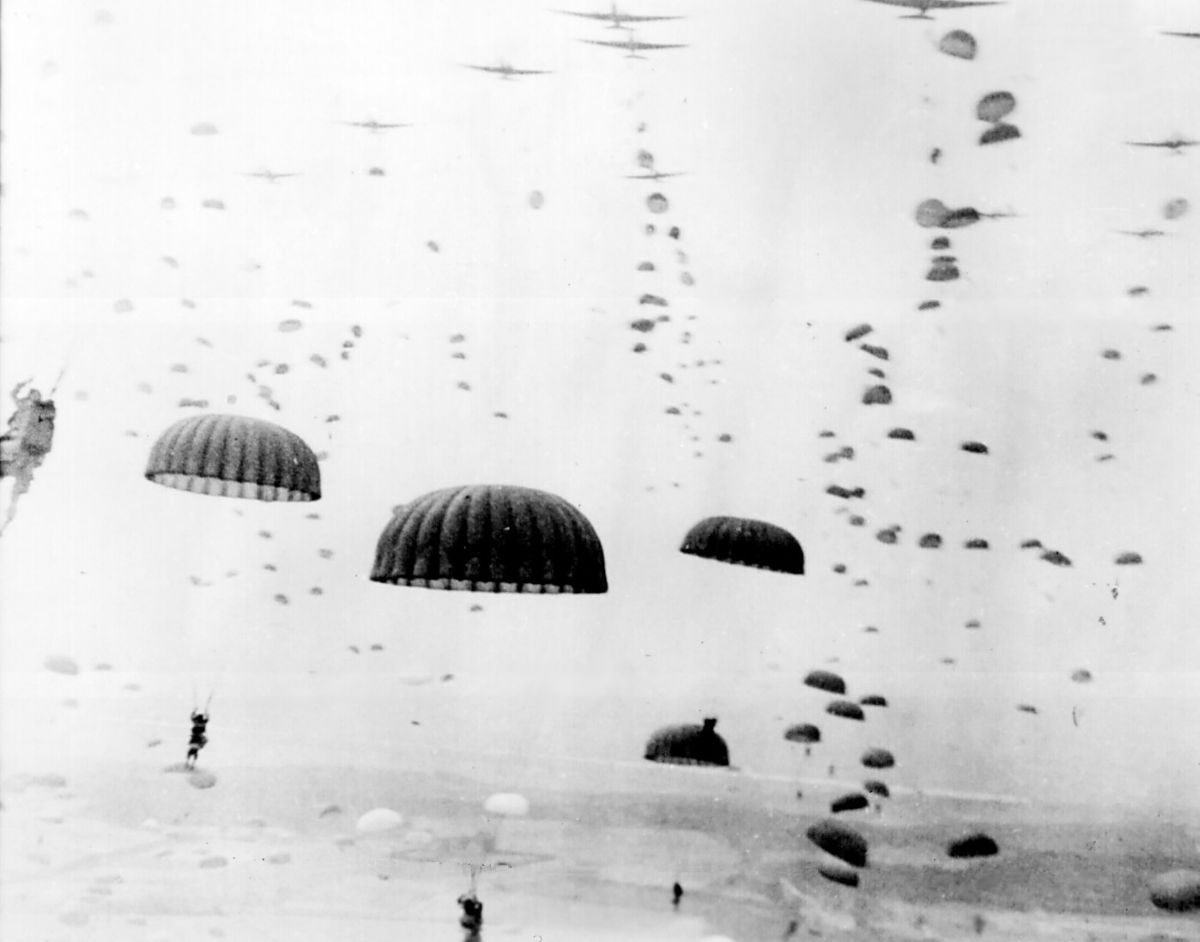Video: 'Operation Market Garden: The Allies' Disastrous Attempt To End The War Early'
(Sunday, September 17, 1944, 12:30 p.m. Central European Summer Time; during Operation Market Garden, part of the Allied advance from Paris to the Rhine on the Western Front during the Second World War) — In a bold maneuver to outflank German defenses, thousands of Allied airborne troops landed behind enemy lines in the Netherlands today, following a massive bombing campaign by American and British heavy bombers.
Armored divisions of the British Second Army swiftly advanced into the country, aiming to link up with the airborne forces in a coordinated effort to breach the German Westwall.
Video: 'Operation Market Garden 1944'
This ambitious offensive, known as Operation Market Garden, is the largest airborne operation of the war to date.
The operation’s primary goal is to establish a 64-mile salient into German-held territory, securing a crucial bridgehead over the Lower Rhine River (Nederrijn) to pave the way for an Allied invasion into northern Germany.
The operation is divided into two phases: “Market,” the airborne assault led by the First Allied Airborne Army, and “Garden,” the ground advance by the British Second Army.
Video: 'Operation Market Garden | What went wrong?'
Over 41,000 airborne troops were dropped at strategic locations to capture key bridges and hold their positions until the land forces could reach them.
The ground troops, consisting of ten armored and motorized brigades, are advancing along a single road flanked by flood plains, a route expected to cover the 64 miles to the Rhine within 48 hours.
Despite initial successes, including the capture of Eindhoven, Nijmegen, and several V-2 rocket launching sites, the operation has encountered significant resistance.
German forces, numbering around 100,000 in the area, have effectively slowed the British advance. The most critical objective—securing the bridge at Arnhem—remains out of Allied hands.
Video: 'The World At War 1973 WW2 EP 19 From Bluray: Battle of the Bulge' (Operation Market Garden at 13:36)
The British 1st Airborne Division, tasked with holding the Arnhem bridge, has faced fierce German counterattacks and is now in a precarious position.
Out of 12,000 men, the division has suffered 8,000 casualties, including those killed, missing, or captured. With the situation deteriorating, the decision was made to withdraw the remaining forces from the north side of the Rhine.
However, a shortage of boats has left many troops stranded, and while some have been captured, others are being sheltered by the Dutch resistance, awaiting rescue.
Video: 'Blitzkrieg to the Bomb (World War II in One Hour)' (Operation Market Garden at 52:41)
Historians are already critiquing the planning and execution of Operation Market Garden, with some labeling it as flawed from its inception.
Despite these setbacks, the Allies have managed to secure a foothold in the Netherlands, though the ultimate goal of crossing the Rhine remains unfulfilled.
In the aftermath, the Germans retaliated against the Dutch population by cutting off food supplies, leading to widespread starvation.
The city of Arnhem, the focal point of the failed bridge assault, did not fall to the Allies until April 1945, just months before the war’s end.

